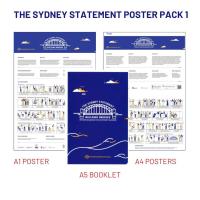
Pilgrimage to different houses of worship. Photo: St Columbans Mission Society.
One of the highlights of our interfaith work in Suva for 2022 was the gathering of around 60 mostly young (and some very young) people from Islam, Hindu and Christian faiths to partake in a local pilgrimage to different houses of worship in Suva.
Our group began their pilgrimage at the Muslim Mosque in Suva, where we were greeted by the maulvi (Imam). Together the pilgrims learned about the Muslims’ different beliefs and worship practices, such as washing, or purifying, themselves before prayer, and entering the mosque by leading with the right foot, and exiting with the left foot first. (The Prophet Mohhamad used to start everything from the right for good things, hence it is an etiquette (adab) to enter the house with the right foot.)
From the mosque, we travelled to a Gurudwara, donned headscarves and sat among the Sikhs who had gathered for worship. The Granthi (official) played the harmonium, sang hymns in Punjabi, and explained Sikh teaching in English about respect for the environment.
After about half an hour we departed for a Hindu temple on the next street. We sat in the mandir while the Pandit explained who the different deities were and their beliefs in one God. He also shared about the different days dedicated to deities. Hindus have many scriptures, but Tulsidass’ Ramayan is the most popular one in Fiji. We were then treated to a delicious vegetarian meal.
After lunch, we proceeded to the chapel of the Church of Latter-Day Saints. Elder Whippy welcomed us. We watched a video about the LDS house of worship in Rome and enjoyed a lively Q&A. We heard about the LDS practice of being baptised on behalf of deceased relatives and we noted the strong emphasis on family.

Pilgrimage to different houses of worship. Photo: St Columbans Mission Society.
Our pilgrimage ended at St Joseph the Worker Parish, where Columban priest Fr Frank Hoare explained the two major beliefs of Catholic Christians contained in the sign of the cross – Jesus Christ’s saving death on the cross and His revelation that God is trinitarian, that is, the Father, the Son and Holy Spirit are one. Fr Frank also explained the significance of the altar, the baptismal font, the tabernacle, the statues, and that the colour of the vestments that the priests wear changes in accordance with the religious season of the year.
We, pilgrims, were inspired by the variety of ways in which we seek God and God’s will for us. We experienced marvellous hospitality along the way and learned that God can be found everywhere no matter our differences in culture, belief and practices. We thank the religious leaders who warmly welcomed all to their places of worship.
Priscilla Magdalin is the coordinator of the Interreligious Dialogue Columban Mission Office in Suva, Fiji.
Related links
- Read more from the current Columban Interfaith eBulletin



